
Welcome to the Partisan Advertising blog.
The Partisan Advertising blog has advertising agency-related posts dating back to 2010 covering a vast array of topics.
Grudge purchases - a 2015 perspective
Buying something you don’t actually want is never easy, which is why grudge purchases are the hardest things to advertise and sell.
Buying something you don’t actually want is never easy, which is why grudge purchases are the hardest things to advertise and sell.
Don’t misunderstand me here – all the stuff that we don’t want, but have to have, will always sell. But when it comes to grudge purchases, no one gives a damn about the brand, the supplier or anything else except the lowest price, the most convenient access, and the best warranty where applicable.
Think about it, we all need petrol, tyres and shock absorbers for the car, or insurance for our health, houses and lives but we don’t really want them. When your tyres get bald and your car fails its WOF, you get new tyres or you walk. But that doesn’t mean you like shelling out eight hundred dollars to keep your car moving. When you need tyres, you probably do exactly what I do – identify the type of tyre you need and then call around to find the best deal. I do the same with insurance and electricity.
If there was a site that gave me the prices of tyres around Auckland, I’d be there in a second.
When I bought travel insurance for my current overseas trip, I looked on Squaremouth. I was presented with exactly what I wanted from a wide range of insurers, most of which I’d never heard of. At this point, brand was the least important thing on my mind – what I wanted was the best deal for the amount of cover I needed, and I wanted peace of mind i.e. good customer reviews, of which there were plenty (this is a great example of where keeping your customers happy pays off in the long run).
So I think it’s safe to say that grudge purchases are the worst kind of product to have to sell, and they’re just as tough to advertise. Here’s an example of how deeply people resent grudge purchases – my partner is a health practitioner. She specialises in helping adults and kids sort out symptoms involving speech, breathing, appearance and other oral-related concerns, and she does it all online.
It’s easy to see how much some patients resent having to go through the treatment. Yes, it has the potential to change their lives or the lives of their children, but it’s just another thing they didn’t want to have to spend over $2,000 on, let alone to have to work intensively with her for months on end. So they show up late, miss appointments or occasionally, they just drop out entirely. Some don’t even sign up in the first place even though they need the treatment and a dentist or orthodontist has referred them. Cutting off their noses to spite their faces you might say.
On the other hand, my partner also teaches other practitioners how to do what she does. These clients are fired up with the idea of starting a new career, earning more money, and even perhaps moving to a new phase in their lives. They’re always there, always on time, and they’re totally involved in the process. They know that they both needed and wanted this purchase. That’s the holy grail of sales and marketing, and it’s nice to have that kind of product or service if you can get it.
But what do you do when you can’t? When you’ve got something that’s not just a parity product but also a grudge purchase? It’s tempting to advise you to just close the doors and go fishing but there’s an enormous amount of money to be made in that space – this stuff always sells remember? You just have to sell more of it than everyone else.
The answer is that you have to stand out. Not by being the official tyre of Formula One, or the approved deodorant of the All Blacks but by being better than everyone else in some way that’s both tangible to your existing customers and can be marketed to your potential customers.
This brings us back to the aforementioned good reviews. In an environment where all the products are much of a muchness, you need to have positive customer feedback and proactive engagement. You have to find a way to shine. If you offer a service, then do something, anything to offer extra value. And at this point, let me clarify that I don’t mean giving something away. Instead, could you set up the best call centre in the country, with the lowest waiting times for example?
If you’re selling products, then what could you do that your competition simply can’t or won’t? More useful information on your website perhaps? Product demonstrations? There has to be some way to actually engage with your customers.
And once you’ve done all that, you still need to look at your marketing with a fresh pair of eyes. If everyone in the game is doing one thing, you might want to do something different. A prime example of this type of thinking can be found in this case study.
How does one launch a product into a market with a strongly entrenched competitor, especially a product that no one really cares about because it’s just something used by farmers to treat cows?
Well, you do the exact opposite of what everyone else is doing. Then you get results like these:
It sold 406% above forecast in less than two months.
The product sold out in two months and all advertising had to be temporarily halted so that production could catch up to demand.
After just one year in the market, it’s the third biggest product of its kind in New Zealand.
They said it couldn’t be done. It can if you’re brave enough. And yes the campaign was planned and executed by my brother but 406% is 406%. End of story.
A world without advertising already exists
How much advertising is too much that it becomes meaningless?
I spent much of the second half of 2014 in the USA, mostly around the Seattle area. Over there, there’s no doubt that you’re in the home of consumerism, especially as the holiday season gets into high gear.
The Americans sure do love to spend, so there’s a barrage of advertising and promotion that makes New Zealand look and feel a touch tame. Every niche is covered by more brands and products than anyone from a little island at the bottom of the world could imagine.
But from an advertising perspective, it seems to have reached the saturation point that many commentators have been expecting for a while.
There’s just so much advertising that it’s become tough to interface with most of it, let alone all of it. I paid close attention to the way the people I stayed with interacted with the advertising they were subjected to (and yes, I do mean “subjected to”, American advertising isn’t particularly good).
Admittedly, these people make up an infinitesimal fraction of the total audience but they’re also a pretty typical cross-section of American consumers. Their habits are interesting to say the least.
Effectively, it seems they’ve become experts at ignoring the vast majority of advertising, and cherry-picking only the tiniest sliver of what captures their attention. They tune out television advertising the same way a politician tunes out a poll result he doesn’t like.
The TV becomes a white noise generator while they multi-screen away to smartphones and tablets. No one even seems to register most of the magazine or newspaper ads.
Then we have the vast piles of circulars that go unnoticed except for the ones that address a specific need – picture the old-fashioned scene of a housewife clipping coupons from a catalogue – she’s not cutting out the ones she doesn’t need. That’s how these people consume their media – by ignoring most of it.
I’ve said that this was already the case when it came to TV advertising in New Zealand, and I’ve looked at multi-screening in the past. The industry loves the idea that consumers are still seeing their advertising somewhere, and as long as that’s happening, they’re adamant that it’s getting results. It isn’t, at least not as much as you think, if it ever did.
"Ah this show ain't no good!" - Elvis loved television but he sure hated advertising.
We all knew this was coming. Logically, no one can take in every single advertising message they encounter, so a new specialisation skill is developing.
Please don’t kid yourself that your advertising isn’t being affected by this enhanced indifference. Unless you’re reaching your consumers and reaching them in a meaningful way around the time they’re contemplating a purchase, then you’re wasting much of your money.
Frankly, this has always been the case, but it’s truer than ever today. You used to think you were wasting 50% of your advertising dollars, I believe that’s now a very conservative estimate.
I was asked if people could live in a world without advertising. I’d say that in some areas of the developed world, that’s already the case. Just because it’s there doesn’t mean anyone is seeing it.
Mr. Advertiser, I hate to break it to you but there’s a very good chance that unless you’re doing something unique, then you’re just part of the noise. And no, you can’t overcome this problem by throwing more money at it.
You need to think outside the rhombus, and if your advertising agency can’t do that, then you’re seriously going to get left behind; maybe not next year but pretty damn soon. If your agency is telling you to do what you’ve always done or to replicate what your competition is doing (but with some minor spin to it), then you shouldn’t walk away, you should run.
How to intern at an advertising agency
The real hassle is that advertising agency interns learn how to undervalue their creative worth by working for nothing. Gee, doesn’t that sound a lot like any ad agency pitching for a new account? I wonder how that bad behaviour became so entrenched?
After my recent blog post on the plummeting value of creativity, it was suggested that I take a look at another bastion of undervalued creativity – the intern.
These hapless youngsters usually arrive at agencies across the planet, wearing their dreams, aspirations and ambitions on their sleeves in much the same way as the proverbial small town, 1950s-style, girl next door does when she goes on her first date with the star rugby player at high school. She’s as full of hope as they all are, but we can be pretty sure that the rugby player has only one thing on his mind, and it’s not a white picket fence. The agency owners have more or less the same thing in mind, metaphorically speaking.
Too harsh and cynical? Not harsh or cynical enough as far as I’m concerned. Over the years, I’ve worked at enough companies to know that many see interns as little more than an endless pool of unpaid labour, to be put to work and then worked hard doing anything and everything that’ll help them “gain experience”. If by some odd chance, the intern is a fit for the agency, has some skills, and is willing to work their body and mind into the ground, then they may get to stay on or return later in a full-time role.
Of course, the agency is happy regardless, they didn’t pay for the work or to train the new employee, and in the worst-case scenario, they just get a new intern or two next year.
I met a guy on an overseas trip back in 2011 that loved interns. He ran a smallish advertising agency, and when he needed extra hands at the pumps, he’d reach out to the local university to get what he needed, with no intention whatsoever of ever offering anything approximating a full-time role. I’d suggest that this isn’t atypical behaviour, which makes me think that an internship can be a harrowing, worthless way for a young person to enter the workplace. Sure it can sometimes work out well for all concerned but obviously, I’m not convinced.
Let’s take a closer look at internships in advertising and marketing. Interns often work for less than nothing so they can get “experience" but usually, they learn nothing except how to go buy cigarettes for the creative director, or how to slave late under massive time pressure doing distinctly average work just to get across the finish line for a rushed project.
The real hassle is that interns learn how to undervalue their creative worth by working for nothing. Gee, doesn’t that sound a lot like any ad agency pitching for a new account? I wonder how that bad behaviour became so entrenched?
Back to the value of creativity – if you can get a logo designed for less than the price of a kebab, or retain the services of a (hopefully) creative and enthusiastic intern for free, just what exactly are we saying about the value of creativity?
When did creative ideas become so undervalued across the board, let alone utterly worthless based on age and a lack of experience? Surely there has to be some value attached to the work of an intern, particularly if they’ve got real talent?
Many interns arrive at an ad agency with better eyes and minds than the slobs that have been there for a decade churning out the same dross, so why isn’t their talent and hunger valued more highly? Because age and experience bow to neither man nor beast, at least not in the entrenched hierarchy that is Adland.
Hell, Mozart was composing at five years of age, so let us assume that there are some youngsters who seriously know their stuff. I’m not saying that agencies should hire my nine-year-old nephew, even though he could probably do better work than some of the stuff that arrives in mailboxes around New Zealand every day, but the question has to be this: How is an industry based entirely on creative output valuing and boosting creativity in the youth?
Are internships in creative agencies just a way of ensuring that the status quo continues? Of course they are! That’s just the way it is. You don’t start an internship at a traditional company like Boeing, with its 165,000 employees and expect to emerge at the end of your three months has transformed the culture, vision, processes and products. What actually happens is that you get twisted and moulded to fit the machine.
The same thing happens at most advertising agencies. Interns are charmed by the big names, the glamorous clients and the spankingly impressive boardroom table. Soon enough they realise that the corner office can only be inhabited by someone just like the person currently in that seat. So they become just like every other cog and gear in that machine.
Many of the interns want exactly what their internship promises – a career being just like everyone else in the agency. They’re told early on that their creativity is only worth what the machine says it is worth i.e. very little. And they learn to just do the kind of work that the machine demands. Hello, status quo. Hello, same old boring advertising. Hello, same old pat each other on the back advertising awards.
The ironic part is that the very people who run the machine are encouraging and driving the devaluation of real creativity. Think about that one for a while.
One can only hope that there are certain interns, who after a period of virtual slavery realise that there has to be more to life, who believe that their creativity and vision are worth more than someone else’s corner office. Let’s hope they stroll out of ye olde school agency with a James Dean-like glint in their eye and a whirlwind of ideas in their mind, looking for ways to disrupt, to change, and to forge their own damn corner offices on their own terms. Lord knows the advertising game needs a few more of them.
Has Advertising Lost Its Value?
What is the value of an advertising agency? If you can get a logo designed online for $5, when will the time come when you can get an entire advertising campaign done online as well?
It was Mr Dylan who said something about the times changing. At this stage, it seems that the times aren’t changing, they’ve totally transformed.
Things are definitely not what they once were. We can access the sum of human knowledge from a tiny smartphone, and we can peer deep into distant galaxies but despite our newfound technical skills, we seem to have lost touch with the value of things.
This is logical I suppose. When everything is reduced to a picture on a 5” high-definition screen, complete with a “Buy Now” button, and instant gratification isn’t just the norm, but a vitally important part of our lives, then is it any wonder that things have become virtually meaningless?
Something that’s also apparently rapidly becoming worthless is creativity. We live in an age where we can get logos designed super-cheap, and almost anything else designed, written, made or installed for as little as the punter is prepared to pay.
When, and more importantly, how did this happen?
The when is hazy, because the timelines have shifted like sands on a distant beach disrupted by unnatural weather patterns. The show is much clearer. First, there was globalisation, and then the internet changed everything, bringing globalisation to the masses in a way that no one could have foreseen.
The success of The Warehouse in NZ can be ascribed to one simple factor – the ability to put cheap stuff in the hands of a market that wants it. Why pay more when you’re shopping for commodity products like toys, garden hoses or plastic buckets? They’re all the same thing regardless of where you buy right?
Well, no not really, but enough people think they are to make the red sheds a licence to print money. Theoretically, the same logic can be applied to creative activities. A logo is a logo is a logo right? It must be because you can get one online for as little as $5. In fact, the skills required to design a logo must be pretty worthless because not only can you get a logo cheap, designers will queue up just to offer their services, making sure you get real value for your (tiny bit of) money.
The next logical extension of this approach is to outsource anything and everything creative. If you can get a logo done at a discounted price, then why not let a creative type from “someplace cheap” whip up your next advertising campaign? Too much of a stretch? Not for everyone! Once the idea sets in that creativity is worth exactly what the customer is willing to pay, and that all creative work is worth only the lowest available rate, then the rot can set in.
Don’t believe me? I once worked for a publisher who liked the idea of outsourcing articles from the Philippines, rather than paying clued-up local writers to craft well-written pieces for his magazines. The idea didn’t go far because there are some articles that just can’t be written by people who aren’t on the ground, living and breathing the environment they’re writing about. Sometimes, you need a specialist writer.
The same is true when it comes to many other creative endeavours, including advertising of course. Sometimes, you just need a specialist to do specialist work, an expert who knows the local environment, who understands the competition, the consumer, the channels and the delivery mechanisms. Someone who can craft your advertising, or even your logo for that matter, because they have years or decades of local experience. Just because you can get cheap work done internationally, or even locally doesn’t mean that you should.
But don’t take my word for it. Rather, look at it from another perspective – yours. You’re not buying a cheap bucket to wash the car with, one where it doesn’t really matter if it lasts six months or a year. That kind of thing you can replace at will.
When it comes to advertising and design, you’re buying sales and profit. You’re buying bottom line numbers on the spreadsheets that tell you if you’re staying in business, getting your butt kicked, or dominating your sector.
There’s no doubt that working with a gifted creative team will cost you more than hiring the lowest bidder, but you’re far, far more likely to get results when you work with people who see you and your company as more than merely job #1728 of the year.
There are other questions to ask yourself when you’re shopping around for design work or help with your advertising:
Does my brand and business matter so little that the lowest bid makes sense?
Do I believe that my 50 and 60-hour work weeks are only worth the cheapest possible marketing?
What would happen to my bottom line if I could get some great advertising instead of the humdrum stuff I always run?
To close, allow me to tell a little story. I was recently walking around a little town in Phuket, Thailand looking for a rice cooker. I was nowhere near a big department store, so I strolled into a small local appliance shop. The proprietor showed me a Sharp brand rice cooker for 590 Baht ($25ish) but I saw that he also had an off-brand model for closer to 300 Baht ($12ish). I asked him what the difference between the two units was. He scratched his jaw, reflected for a moment and then said, “This one cheap, this one good”. I bought the good one. You should too.
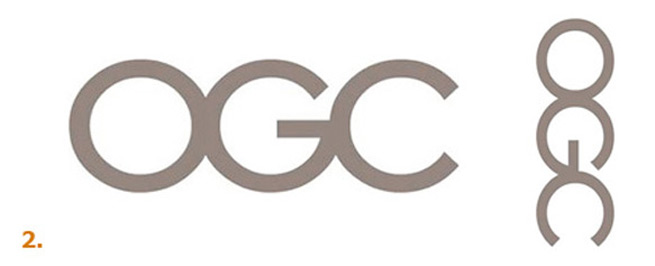
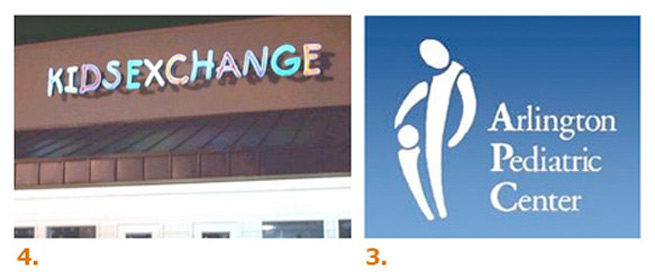

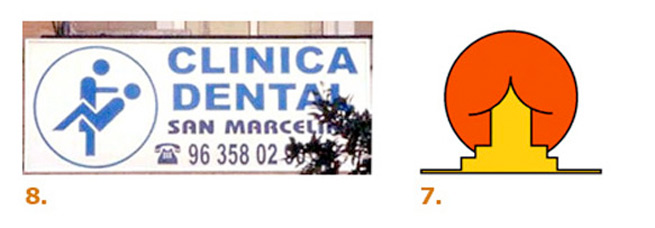
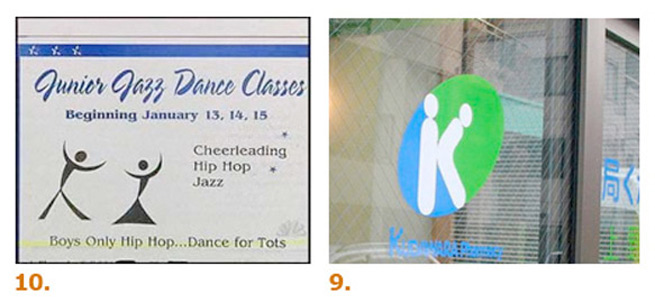
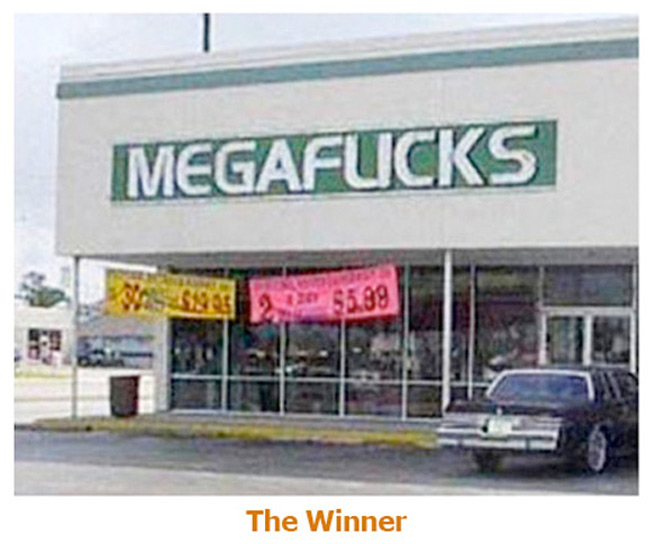
So what does a $5 logo look like?
And what does a $17,000,000 logo look like?
The city of New York spent $17 million on a campaign to redesign the iconic "I Love NY" logo. Was it really worth it?







